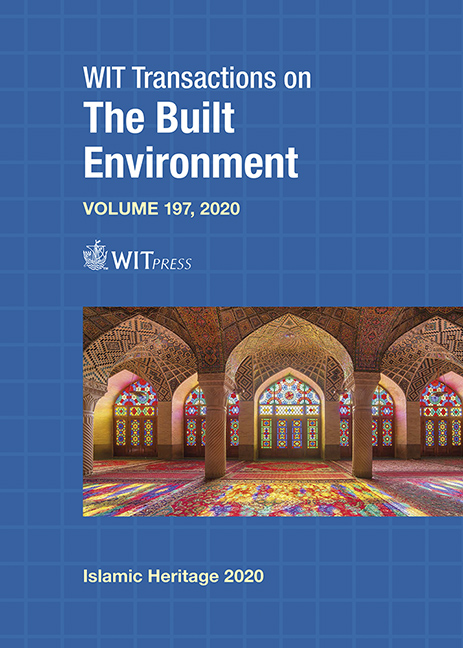ELEMENTS OF ISLAMIC ARCHITECTURAL HERITAGE: MINARET
Price
Free (open access)
Transaction
Volume
197
Pages
12
Page Range
167 - 178
Published
2020
Size
513 kb
Paper DOI
10.2495/IHA200141
Copyright
WIT Press
Author(s)
SAHAR DIAB
Abstract
The minaret is an architectural “authentic” feature, which appeared as a landmark of Islamic cities. It used to be the place where the call to prayer is sent out, “Al Athan”. However, maintaining using the same old-traditional language in designing and formulating the minaret, in a way that diminishes its visual power and eliminates it from the urban context by ignoring contemporary technological advances and capacities, has created an urgent need for reconsideration in minaret design. Hence, this research presents the important role of minaret as a distinct element of Islamic heritage and tries to redefine it in a modern perspective. This research defines its framework in three-dimensional aspects: form, function and content. This study attempts to determine the feasibility and applicability of contemporary implementations by reviewing and analysing a number of modern architectural projects and highlighting the challenges and difficulties facing the moderate application and new thinking in minaret element design. The research finds that contemporary technology and modern construction methods have offered various possibilities, forms and materials that could benefit and re-introduce the minaret as an element of the modern urban fabric too. Moreover, the role of the minaret could be activated in an unconventional way, which allows it to integrate and interact with its surrounding space rather than remaining a symbol from the past. In addition, this paper suggests the possibility of using the minaret element to achieve green objectives as an air trap, power generator and source of natural lighting.
Keywords
minaret, contemporary architectural orientation, Islamic architectural, spiritual dimension, mosques




